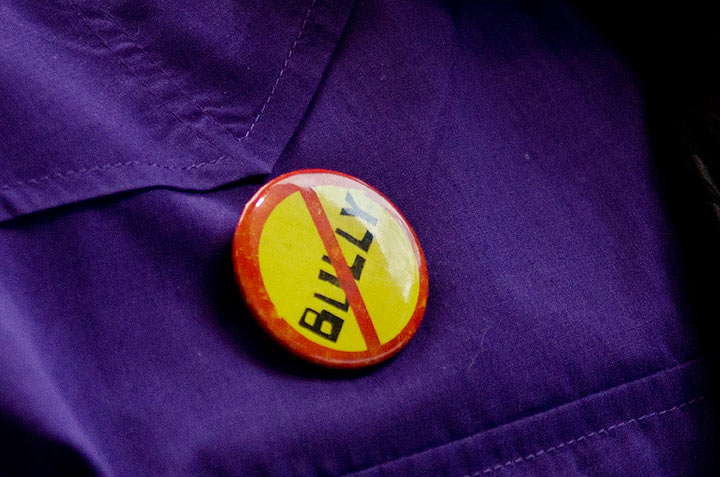TORONTO – Kids can be cruel.

This has always been the case, but more and more, parents are wondering if today’s children are meaner than those in the past.
Has the proliferation of online media amplified mean behaviour?
On Tuesday, MediaSmarts – a non-profit charitable organization focusing on digital and media literacy – released the third part of a comprehensive national survey examining youth Internet use in Canada. Tuesday’s report focuses on cruelty and threats online.
In 2013, MediaSmarts conducted a national survey of 5,436 Canadian students, grades 4 through 11, in 140 schools.
The term “cyberbullying” is often used to describe a range of behaviours. So, in order to get a better understanding of exactly what online behaviours concern young Canadians, researchers asked the students about specific things that tend to fall under the “cyberbullying” umbrella, from meanness and cruelty to threats online.
The survey results found that traditional perceptions of the “bully-victim” relationship as well as the stereotype of “mean girls” are not supported in the data.
Rather than a cruel relationship defined by a bully and a victim, online relationships that exhibit mean or threatening behaviour are more likely part of a reciprocal relationship where retaliatory meanness follows cyberbullying behaviour.
Also, the popularized stereotype of the “mean girl” is inaccurate, as boys are more likely to be mean or cruel online, and girls more likely to be the victims of cyberbullying.
- Life in the forest: How Stanley Park’s longest resident survived a changing landscape
- ‘Love at first sight’: Snow leopard at Toronto Zoo pregnant for 1st time
- Carbon rebate labelling in bank deposits fuelling confusion, minister says
- Buzz kill? Gen Z less interested in coffee than older Canadians, survey shows
Cyberbullying report findings:
- 23% of students said they have done something mean or cruel to someone online
- 37% of students said someone has done something mean or cruel to them online
- The most common behaviour reported is name calling, although this number is still relatively low, with 18% of students reporting they have called someone a name online
- Study findings contradict the “Mean Girl” stereotype; boys are more likely to be mean online
- Online meanness is more likely to be part of an ongoing relationship where both parties participate and retaliate; less often is an attack between a “bully” and a “victim”
- Over half (55%) of those participating in mean behaviour say they were “just joking around”
‘Mean Girls’ stereotype not supported in national data
Despite depictions of “mean girls” popularized in entertainment and media, data from the national survey showed that the stereotype is overblown.
More boys than girls (26% vs 20%) reported that they behaved in mean or cruel ways online.
Girls were more likely the recipients of mean or cruel behaviour, with 43 per cent of girls reporting it, compared to 33 per cent of boys.
Boys were more likely to harass someone in an online game, make fun of someone for their race, religion, ethnicity or sexual orientation. Harassment in online games represented the largest gap between the genders. In-game mean behaviour increased in later grades, despite the fact that gameplay itself decreased.
Girls were more likely than boys to post embarrassing photos or videos of people online.
When it comes to spreading rumours, boys and girls are both guilty, with 18 per cent of boys and 20 per cent of girls reporting that they had spread a rumour about someone online.
‘Bully vs victim’ an inaccurate relationship
The survey shows that the online relationship between Canadian youth can be complex. Often mean behaviour is reciprocal. A lot of students thought meanness was an appropriate response to cyberbullying.
“While most students who report having been cyberbullied say it wasn’t a serious problem for them, we know that one in ten young people have been seriously impacted by online meanness or cruelty,” said Jane Tallim, Co-Executive Director of MediaSmarts.
“The research gives us a deeper understanding of the motivations and impacts of cyberbullying, which is critical to ensuring that interventions effectively target those youth who are most at risk.”
Over half (55%) of those participating in mean behaviour online said that they were “just joking around.” Forty-eight per cent said they were mean because someone else said something mean to them first.
Strategies for dealing with cyberbullying
Boys are girls also differ in how they respond to cyberbullying.
Boys were more likely than girls to do nothing about online cruelty or threats.
When someone was mean or cruel online, girls were more likely than boys to confront that person face-to-face. Whereas boys were more likely to confront someone who issued a threat online in person.
Overall, the students surveyed had similar strategies for dealing with online cruelty, regardless of their age or gender. The most common strategy when dealing with both meanness and online threats is to ask parents for help.
Half of the students said they would talk to their parents if someone sent them something online that made them uncomfortable. The majority of students (72%) said they could trust their parents to help them solve a problem that arose from online behaviour.
What are the next steps?
The report finds that there is no one-size-fits-all solution to dealing with cyberbullying. The harm of online meanness can vary across student populations.
Suggestions for targeted responses to bullying include teachers holding empathy-building lessons to help students recognize and handle “hot” emotional states.
While the survey found that the majority of students (65%) who witness cyberbullying step in to help the person being picked on, more education is needed to teach youth safe and respectful ways on getting involved, according to the study. When students got involved in conflicts, often the way they intervened involved retaliatory meanness.



Comments